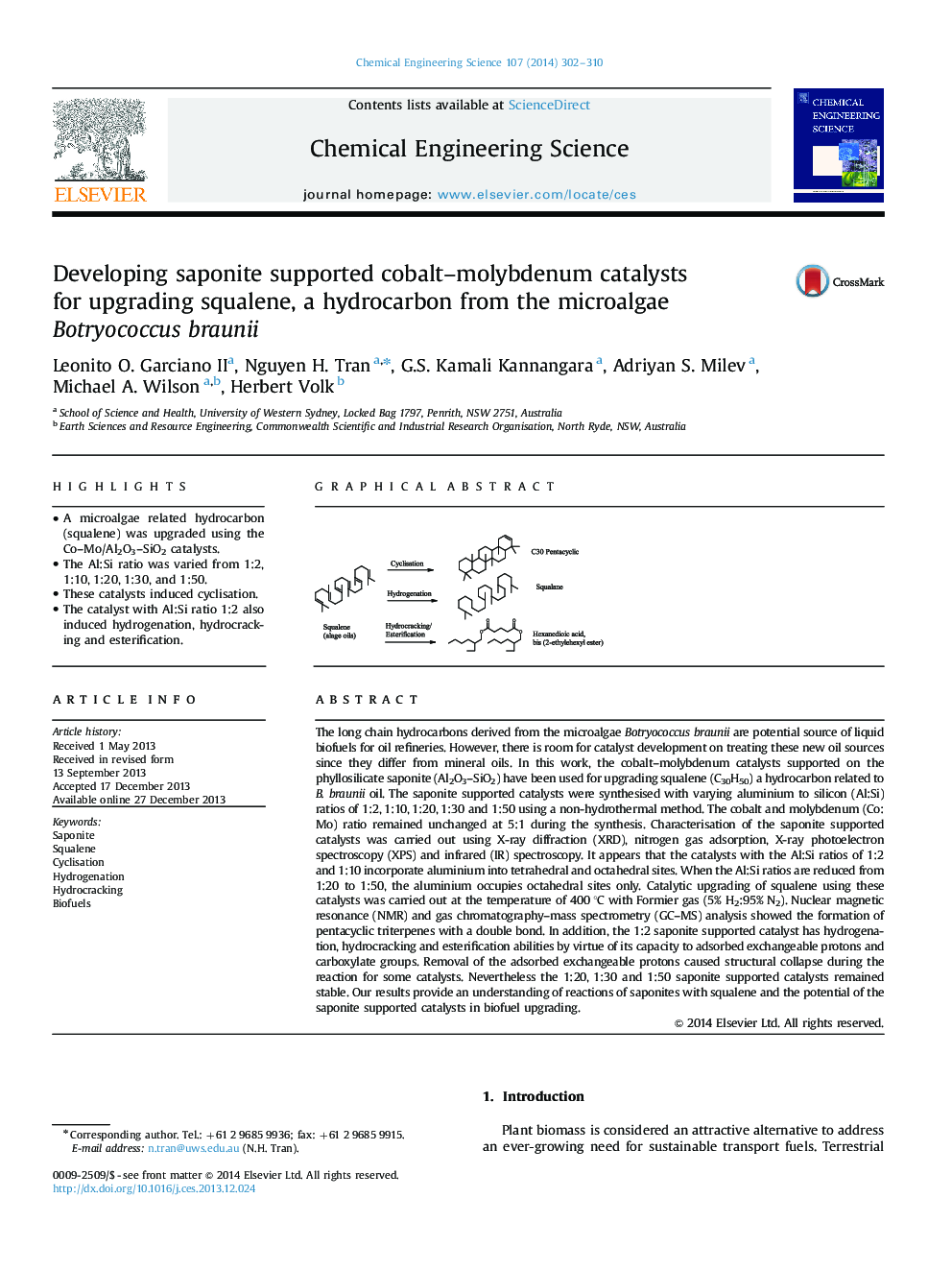| کد مقاله | کد نشریه | سال انتشار | مقاله انگلیسی | نسخه تمام متن |
|---|---|---|---|---|
| 154966 | 456875 | 2014 | 9 صفحه PDF | دانلود رایگان |

• A microalgae related hydrocarbon (squalene) was upgraded using the Co–Mo/Al2O3–SiO2 catalysts.
• The Al:Si ratio was varied from 1:2, 1:10, 1:20, 1:30, and 1:50.
• These catalysts induced cyclisation.
• The catalyst with Al:Si ratio 1:2 also induced hydrogenation, hydrocracking and esterification.
The long chain hydrocarbons derived from the microalgae Botryococcus braunii are potential source of liquid biofuels for oil refineries. However, there is room for catalyst development on treating these new oil sources since they differ from mineral oils. In this work, the cobalt–molybdenum catalysts supported on the phyllosilicate saponite (Al2O3–SiO2) have been used for upgrading squalene (C30H50) a hydrocarbon related to B. braunii oil. The saponite supported catalysts were synthesised with varying aluminium to silicon (Al:Si) ratios of 1:2, 1:10, 1:20, 1:30 and 1:50 using a non-hydrothermal method. The cobalt and molybdenum (Co:Mo) ratio remained unchanged at 5:1 during the synthesis. Characterisation of the saponite supported catalysts was carried out using X-ray diffraction (XRD), nitrogen gas adsorption, X-ray photoelectron spectroscopy (XPS) and infrared (IR) spectroscopy. It appears that the catalysts with the Al:Si ratios of 1:2 and 1:10 incorporate aluminium into tetrahedral and octahedral sites. When the Al:Si ratios are reduced from 1:20 to 1:50, the aluminium occupies octahedral sites only. Catalytic upgrading of squalene using these catalysts was carried out at the temperature of 400 °C with Formier gas (5% H2:95% N2). Nuclear magnetic resonance (NMR) and gas chromatography–mass spectrometry (GC–MS) analysis showed the formation of pentacyclic triterpenes with a double bond. In addition, the 1:2 saponite supported catalyst has hydrogenation, hydrocracking and esterification abilities by virtue of its capacity to adsorbed exchangeable protons and carboxylate groups. Removal of the adsorbed exchangeable protons caused structural collapse during the reaction for some catalysts. Nevertheless the 1:20, 1:30 and 1:50 saponite supported catalysts remained stable. Our results provide an understanding of reactions of saponites with squalene and the potential of the saponite supported catalysts in biofuel upgrading.
Figure optionsDownload high-quality image (125 K)Download as PowerPoint slide
Journal: Chemical Engineering Science - Volume 107, 7 April 2014, Pages 302–310